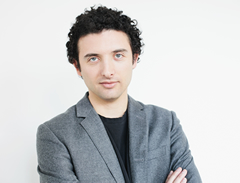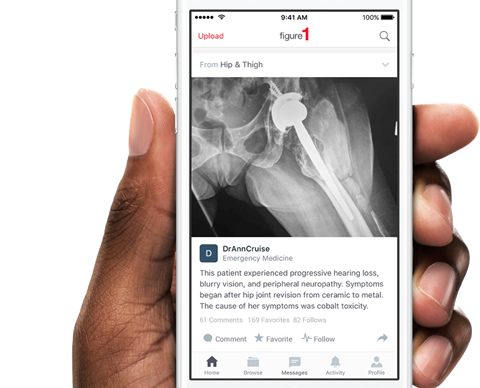Dr. Kevin Venus, an internal medicine resident at U of T, had never seen a baby born with an intact amniotic sac, also known as a caul. This isn’t surprising, since a caul occurs in only about one of every 80,000 births. In all likelihood, he wouldn’t ever encounter one during his career. But thanks to Figure 1, a smartphone app that allows doctors to privately and securely share patients’ medical images, Venus was able to educate himself about this particular medical anomaly. “It’s a unique way to share case studies that you normally wouldn’t find in a textbook,” he says.
Figure 1 was co-founded in 2013 by Gregory Levey (BA 2001 UC) to help health-care professionals get second opinions on challenging cases. It’s also a useful tool for medical students. Levey’s business partner Joshua Landy, a physician, had noticed doctors sometimes asking colleagues about patients via text or email (without using names or case details) and thought there should be a more efficient way to discuss challenging cases.
Figure 1 allows medical practitioners to share patient images, including x-rays and CT scans, with the app’s worldwide community of one million health-care professionals. Software automatically blocks a patient’s face from being shown in the image (unless the patient has signed a release form to allow it), and users must remove any identifying information. Figure 1’s staff check each picture. “With Figure 1, we weren’t asking for doctors to create new behavior,” says Levey. “We’re just simply harnessing that behavior.”

The app acts as a kind of crowd-sourced specialist: instead of one doctor offering their opinion on a case, dozens can share their expertise. Figure 1 users, who are verified by the company’s staff as being medical professionals, can filter the images based on category, such as dentistry and dermatology. This helps match images more quickly to the physicians who can help solve the problem. For patients, the benefit is a quicker diagnosis.
In any given hour, more than 10,000 health-care professionals are active on Figure 1. Authenticating credentials in foreign countries is a challenge, but the company uses automated tools and has hired multilingual staff to expand its international user base.
Levey credits U of T for giving him a global sensibility and believes his degree in English instilled in him a broad and interdisciplinary mindset. “I can’t imagine that I would have made the same decisions throughout my career – the decisions that would eventually lead me to Figure 1 – without these two important influences,” he says.





